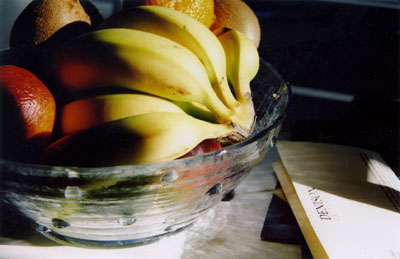All Nonfiction
- Bullying
- Books
- Academic
- Author Interviews
- Celebrity interviews
- College Articles
- College Essays
- Educator of the Year
- Heroes
- Interviews
- Memoir
- Personal Experience
- Sports
- Travel & Culture
All Opinions
- Bullying
- Current Events / Politics
- Discrimination
- Drugs / Alcohol / Smoking
- Entertainment / Celebrities
- Environment
- Love / Relationships
- Movies / Music / TV
- Pop Culture / Trends
- School / College
- Social Issues / Civics
- Spirituality / Religion
- Sports / Hobbies
All Hot Topics
- Bullying
- Community Service
- Environment
- Health
- Letters to the Editor
- Pride & Prejudice
- What Matters
- Back
Summer Guide
- Program Links
- Program Reviews
- Back
College Guide
- College Links
- College Reviews
- College Essays
- College Articles
- Back
The Little-Known Marvel of the Genetically Modified Cavendish Banana
A group of scientists in Australia recently created a Cavendish banana that is resistant to the deadly Panama Disease, specifically a particularly vicious strain called TR4. The team did this in multiple ways, but the main way was by using a bacterium. The bacterium, Agrobacterium Tumefaciens, induced tranferrance of the DNA of a wild, TR4 resistant banana into the Cavendish subject (Kema, 2019). The plant was grown through traditional banana-growing methods, and it and several others were subjected to years of tests.
The biggest reason that this new banana variety helps the world is complex. To start off with, the majority of bananas today are all clones of one specific banana. The reason for this involves the traditional breeding processes prior humans used to make the banana both palatable and disease resistant. A wild banana has large, mature seeds, so early bananas were bred to have small, infertile seeds, with lots of tasty banana flesh around them. Then, in 1950s, a disease hit, endangering bananas. Diseases can devastate banana populations because of the lack of genetic variety. To preserve the banana population, bananas were bred to make a new, disease resistant banana, the Cavendish (Stokstad, 2017).
The Cavendish makes up over 40% of global banana yield. (Dale, 2017). To put this in perspective, that's 47.4 million tons of bananas a year (BananaLink, 2014). The reason this work is being done is, put simply, to save the most common and most widely exported banana in the world. The survival rate increase of 40-80% compared to other bananas, including other alleged “resistant” bananas (Milliner, 2017), vastly improves the chances that this industry will stay in business if the TR4 disease spreads. The industry itself generates $53 billion worth of bananas every year (Fao, 2016).
There are very few downsides to the making of this strain of Cavendish. The initial fruit that was modified was actually a wild Cavendish, with large seeds. This means that the many worries that surround the eating of GM foods do not apply to this GMO. It simply would not be appealing to a human. Moreover, the GM Cavendish does not use any new DNA. Since the modification just “turned on a switch,” the banana is genetically almost indistinguishable from an ordinary wild Cavendish. The biggest difference is that these can grow in infected soil. Why does that help us? Because we couldn’t normally grow Cavendish bananas there anyway. Why would we bother growing them if we can’t eat them? There are two reasons. Firstly, the scientists wish to maintain the existence of the Cavendish species on a purely moral basis. Secondly, the project protects the Cavendish, if in the future it becomes endangered. The project would allow others to use traditional breeding methods to make a domestic Cavendish that is resistant to TR4. That would allow us to continue eating this wonderful fruit, without any environmental fallout.
Personally, I feel that this GM Cavendish fully deserves endorsement. The banana is only a positive thing. It isn’t unsafe to humans, it isn’t even a cross between two species, and it would only be grown on land where normal Cavendish plants could not grow. The GM crop is, in and of itself, a harmless plan B. Therefore, I believe that the GM Cavendish should be widely accepted.
References
Kema, G. (2019). TR4-Resistant Cavendish Questions. [email].
Stokstad, E., Mervis, J., Fox, A., Brainard, F., Cho, A., Kaiser, J. and Normile, D. (2019). GM banana shows promise against deadly fungus strain. [online] Science | AAAS.
Dale, J., James, A., Paul, J., Khanna, H., Smith, M., Peraza-Echeverria, S., . . . Harding, R. (2017, November 14). Transgenic Cavendish bananas with resistance to Fusarium wilt tropical race 4.
Bananalink. (2014). All about bananas | Banana Link. [online]
Milliner, K. (2019). Saving Cavendish: QUT grows world-first Panama disease-resistant bananas. [online] QUT. [Accessed 25 Mar. 2019].
Fao. (2019). EST: Banana facts. [online]

Similar Articles
JOIN THE DISCUSSION
This article has 0 comments.

This paper originated from a biology assignment, but I quickly became facinated by the idea of this GM banana. I did some more reaserch, and since I don't have to turn in the paper for biology, I instead decided to submit it to Teen Ink.
During the course of my reaserch I talked to some amazingly helpful people, so thank you to Dr. Ir. Gert Kema, of QUT, and to the help line at BananaLink. They were extremely helpful in my information gathering.